

Corsets have been a thing since the medieval era. They have been a regular dressing routine for many women; from noble ladies in the 16th century to pop stars and women with snatched waists in the present day. Corset designs have changed greatly over the years. Did you know the modern-day bra is derived from the corset? Today’s corset designs are easier to wear and care for compared to the one in the Victorian and Tudor eras.
Ladies wear corsets with the aim of getting a cinched-in waistline and a long, lean torso. Different types of corsets come in different types of materials including: leather, cotton, twill, lace, velvet and brocade. Corseting easily manipulates a woman’s curves. A woman wearing a corset will have a lifted bust line with wider shoulders and hips.
A corset is women’s undergarment, specially designed for reducing the waistline. It lifts the bust line to give the illusion of a lithe torso and a squeezed in waist. They are made from different types of materials but if worn as innerwear, the fabric should be breathable enough. 100% cotton is highly recommended for corsets worn as innerwear.
Corsets are made to fit the midsection of a woman. There are 2 main types: underbust and overbust. The underbust only rises up to the bra line while the overbust covers the bust. You can choose to wear your corset beneath or on top of your clothes depending on the look you are going for.
Corsets come in a variety of styles with different curve levels. Each of the styles is designed to fit specific body types. For ultimate comfort and style, you must choose a corset that suits your body type and size.
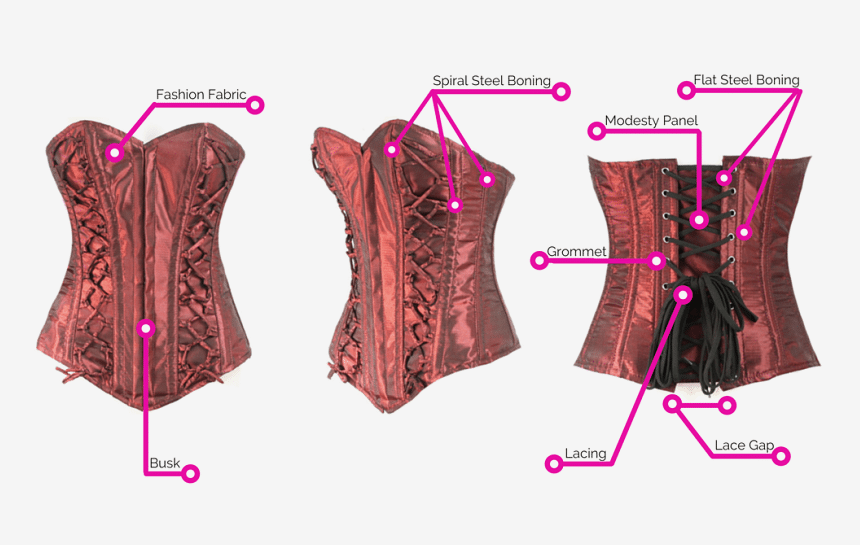
Busk: This is the front center opening on the corset. It comprises 2 long flat steel bones
Shell fabric: This is the beautiful but strong fabric on the outside of the corset. It can be cotton, satin, polyester, brocade or leather.
Flat steel bones: This is boning that only moves in 2 directions and is normally found in the back lace closure of a corset and at the front split busk.
Spiral steel bones: This is what allows you to move and twist when wearing the corset. In essence it is boning that moves in all directions. It’s usually found on the sides and over the bust-line.
Grommets: These are the round metal holes at the back of the corset through which laces glide.
Waist tape: This is an extra layer of material that provides additional strength and support to the corset’s waist because this section experiences more pull and strain. It is usually exposed on the inside of the corset or in between its layers.
Boning: Originally, the rigid structure in corsets was made with actual bones, mostly from whales. Today’s corsets are made with spiral and flat steel bones. Some manufacturers use plastic for boning.
Pins: Also called nobs, they are the steel buttons along one side of the front busk. They are usually inserted into the hoops on the flip side of the busk to fasten the corset.
Different fabrics are used for corsetry and choosing one that suits you best depends on a couple of things other than your tastes and preferences. Some corsets are made with more than one type of fabric to offer a comfortable and beautiful finish. The SHYMMUO women’s lacing corset is a prime example. It is made of 90% polyester, 10% spandex and lace. Here are some of the top fabrics used to make corsets:
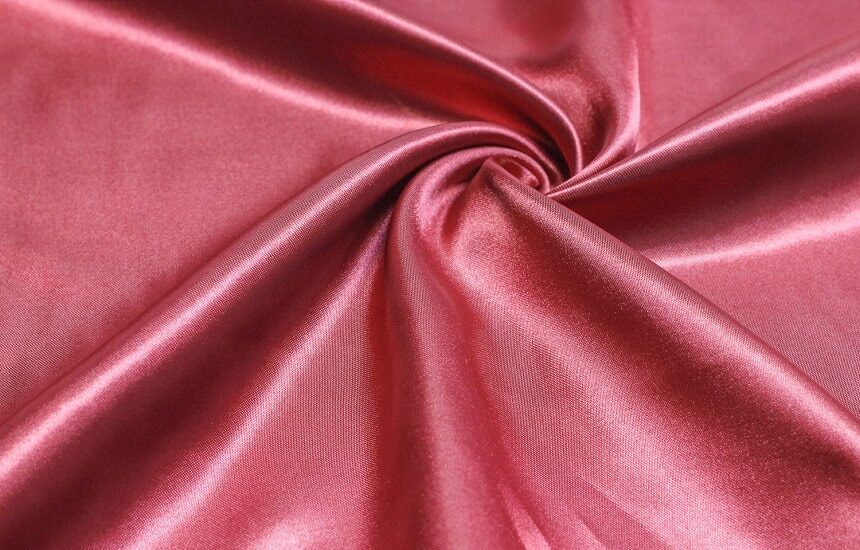
Satin is beautiful and shiny. It slippery smooth and glossy nature gives it a lustrous appearance. It is an elegant fabric that screams luxury. If you choose a satin corset, go for high-quality ones made with thick and medium-weight satin. It has the perfect stiffness that offers the ultimate durability needed for hand beading or other detailing.
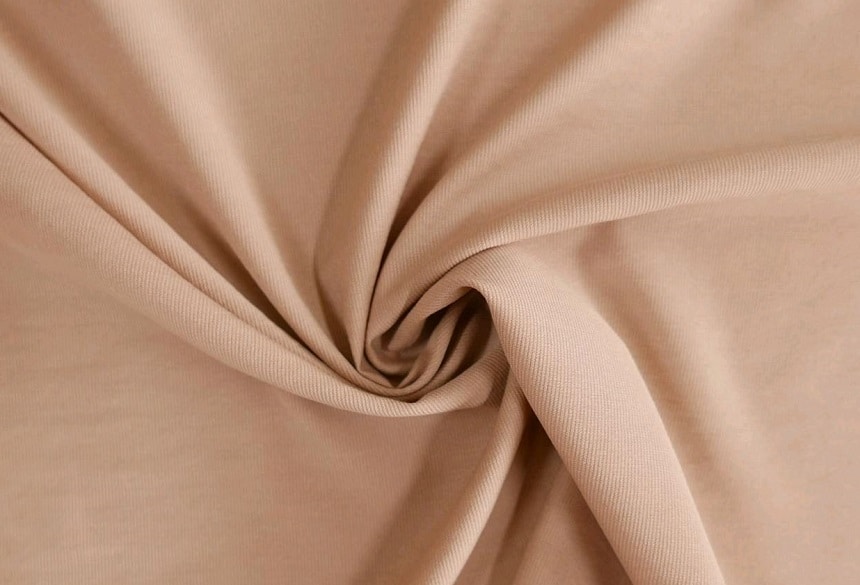
This is the top most common fabric used in corsetry. It is preferred by many because it is natural, breathable, soft and absorbent. Its nature makes it the most ideal for hot weather. Also, if you intend to use your corset as innerwear then cotton is the best recommended material.

The most common type of leather used in corsetry is vegan or faux leather. Faux leather is ultra-durable and can last for ages if cared for well. It pretty much feels and looks like real leather and can hold up well to scratches and scrapes. Plus, it doesn’t retain moisture. You wouldn’t have to worry about it peeling or cracking. Cleaning it is such a breeze; a simple wipe with a damp cloth would do.
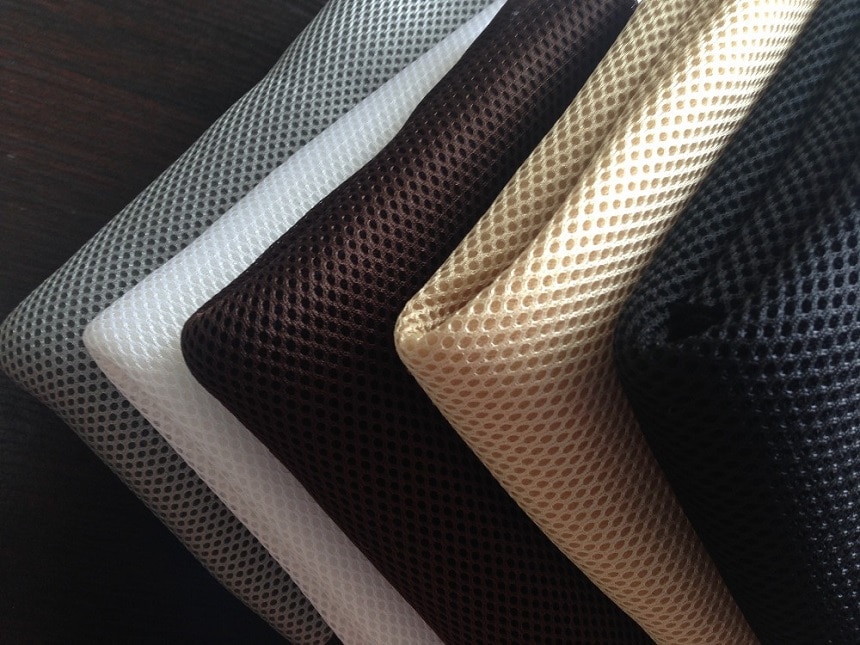
Like cotton, mesh corsets are breathable and lightweight. Therefore, they are a perfect choice for summer or hot weather use. Since mesh is not a bulky fabric, corsets made from it can be worn under lightweight dresses and t-shirts. They are also a vibe when worn over garments as the colors and patterns of the garments peek through.
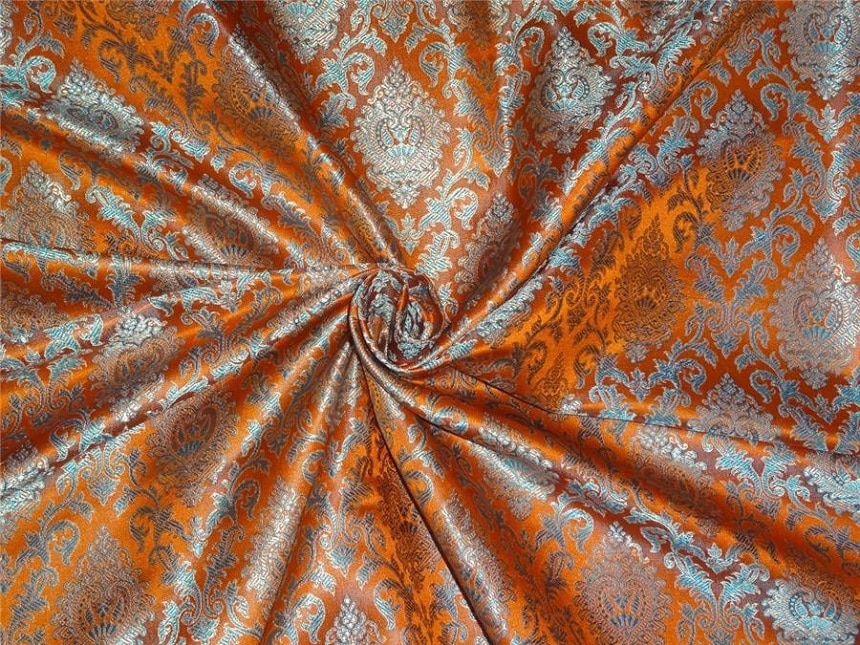
Brocade is a thick woven textile that gives the illusion of old-school tapestry. Corsets made with brocade ooze elegance and class. It should be a top choice for anyone looking to add an eye-catching piece to their wardrobe.

Also known as latex or vinyl, PVC is a fun and sexy fabric. It might take longer to season but when done correctly, it molds beautifully to the body and creates beautiful curves. Since latex can get very hot, it is not the best option for wearing under clothes. It is mostly worn as an outfit accessory for style.

Lace has been the prime fabric for making different women’s undergarments from bras and panties to corsets and bustiers. There are stretch and non-stretch lace fabrics. Lace is breathable and lightweight, thus comfortable to wear under garments in the hot weather.
There are different types of corsets according to body shapes or silhouettes, size, length or position, and the time period of design. Here are the main types of corsets according to position:
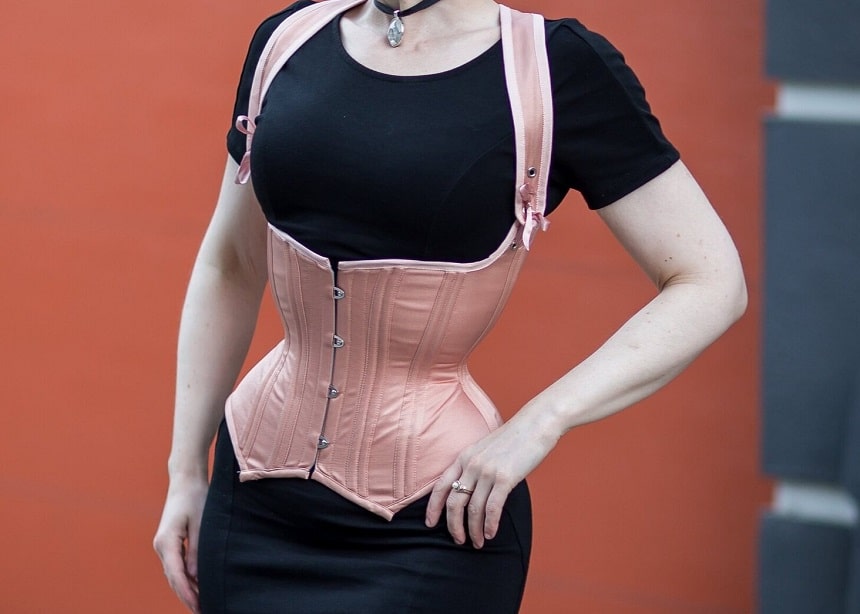
Just like their name suggests, underbust corsets begin below the breasts and end at the beginning of the laps. The most recommended corset for beginners is an underbust with garters.
Underbust corsets can be worn as both fashion accessories over clothes and as supportive garments. You can wear an underbust corset over a dress or shirt. You will be able to achieve the hourglass shape, but you won’t get support for the breasts.
On top of offering back support like overbusts, underbusts are the most versatile corsets. A single cotton underbust corset can be worn with a million different outfits in different styles.
The most popular types of underbust corsets include:
Longline: This corset is meant for women with long torsos. It goes over the hips and offers the most coverage.
Cincher: This is an underbust that is shorter on the sides but long at the center, front and back.
Bodice: This offers the most coverage for the back and the shoulders. It has straps and ends around the natural waist.
Underbusts with wide straps: These are perfect for women with wider shoulders. They mostly come in the halter or cross-back style.
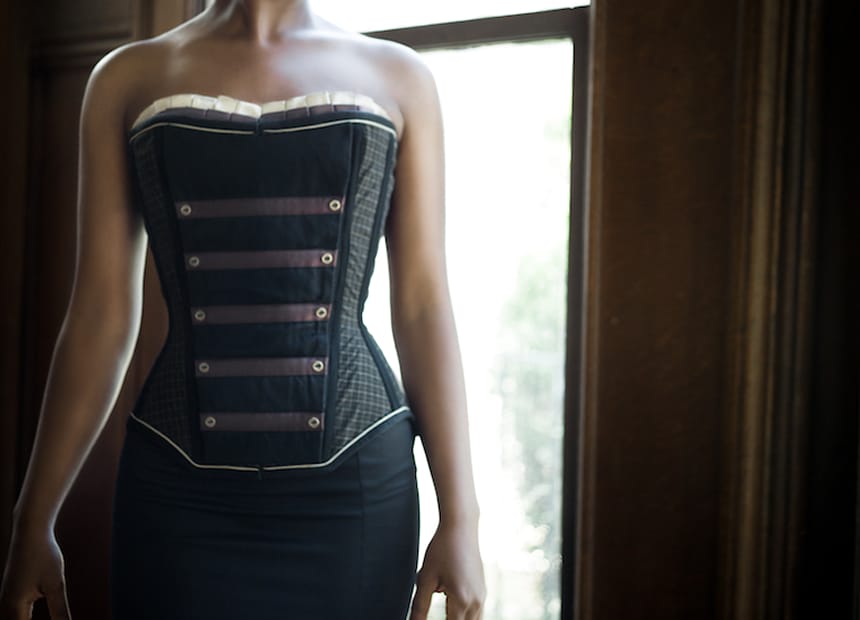
This begins right under the arms and ends above the hips. It lifts the breasts up while reducing the waistline. You can wear it casually every day or to an elegant evening event under or over your clothes. What’s more, the corset offers great support for the back.
The only downside to overbusts is their lack of versatility. You can only have one style with it. The most common types of overbusts include:
Lingerie corsets: These have a more revealing design. They are usually made with details like silk, lace and beads. They also come with a G-string and detachable or built-in garters to hold up the stockings.
Cupped corsets: These feature built-in pads. They are the ultimate choice for women with larger breasts because they offer ample support.
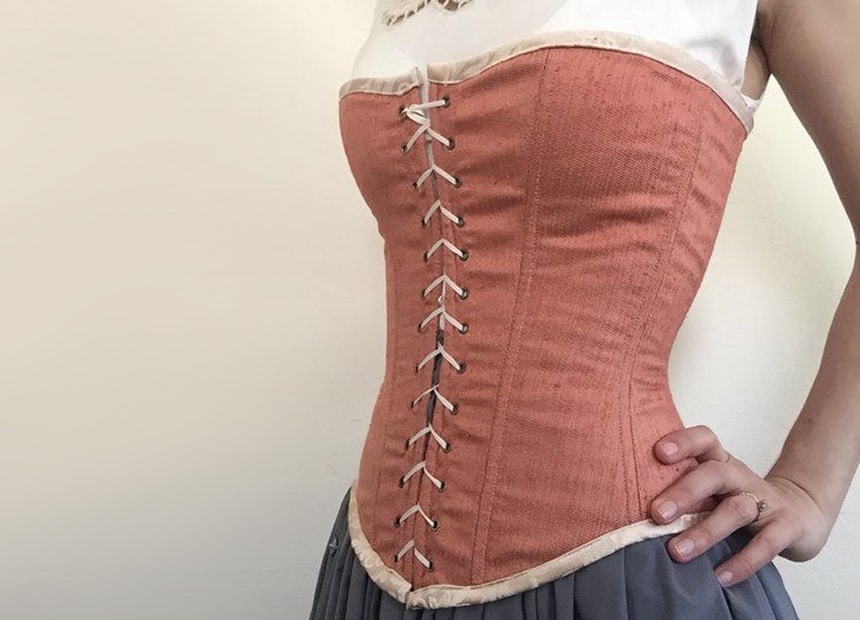
This begins from the mid-bust just like its name suggests and it smoothes down to the torso and the hips. It supports the breasts without creating a dramatic push-up effect. With this corset, you will achieve a smooth, long columnar silhouette. Its bottom edge extends to the low hip but its boning stops a bit higher, allowing you to sit comfortably.
Corsets have evolved since they were first created. Every time period in history has its own corset design.

This is a corset that goes down to the waist. It has shoulder straps and flat sides that cover the front and rib area. Its bottom has a scalloped edge and its back has lacing. Its design creates a dramatically elevated bust line.
The tight corset flattened and pushed up the breast in the front along the torso creating a dramatic squeezed cleavage. Other than the cone-shaped torso, it also created wide-set shoulders and large hips that are padded out.
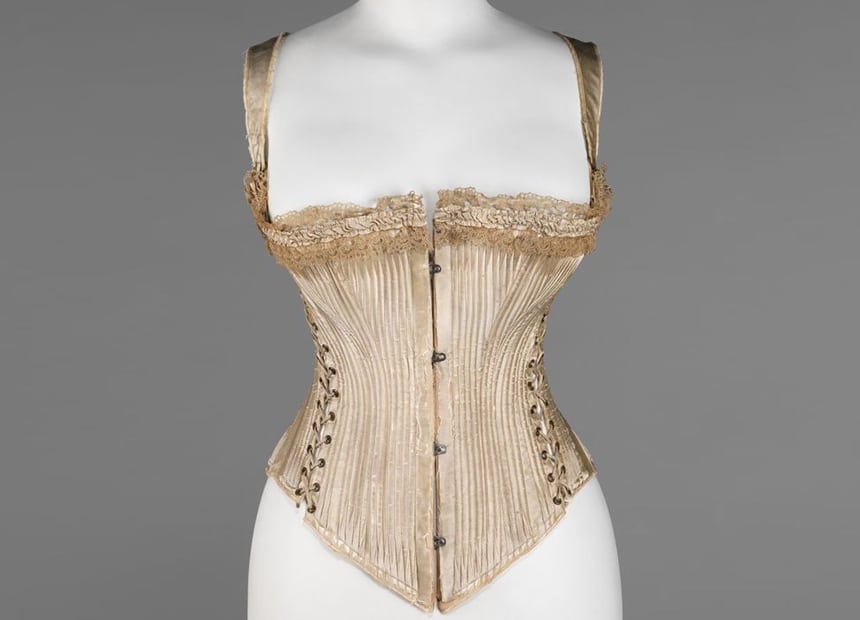
The Victorian period is the ruling period of Queen Victoria from 1837-1901. The corset of these times was an overbust with a natural curved bust line and hourglass waist profile. The neckline was either sweetheart-shaped or pointed. The bottom of the corset was mostly pointed in shape as well.
The Victorian corset wasn’t as comfortable as the Elizabethan corset because it squeezed the ribs to compress the waistline.
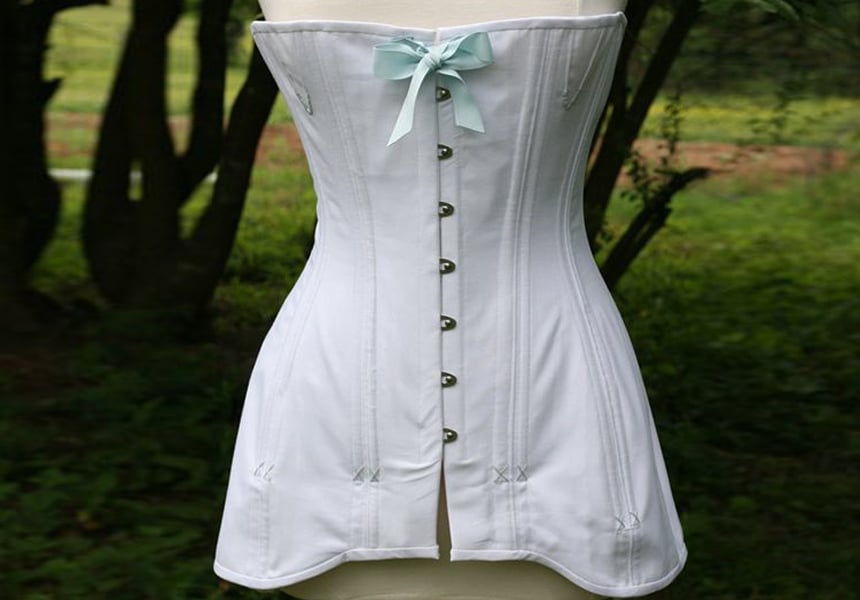
The Edwardian period is the early bit of the 20th century from 1900 to 1910. The Edwardian corset gave the body an S-curve. It was longer than the Victorian corsets because it went lower than the hips.
Other types of corsets according to body size, shape and position include;
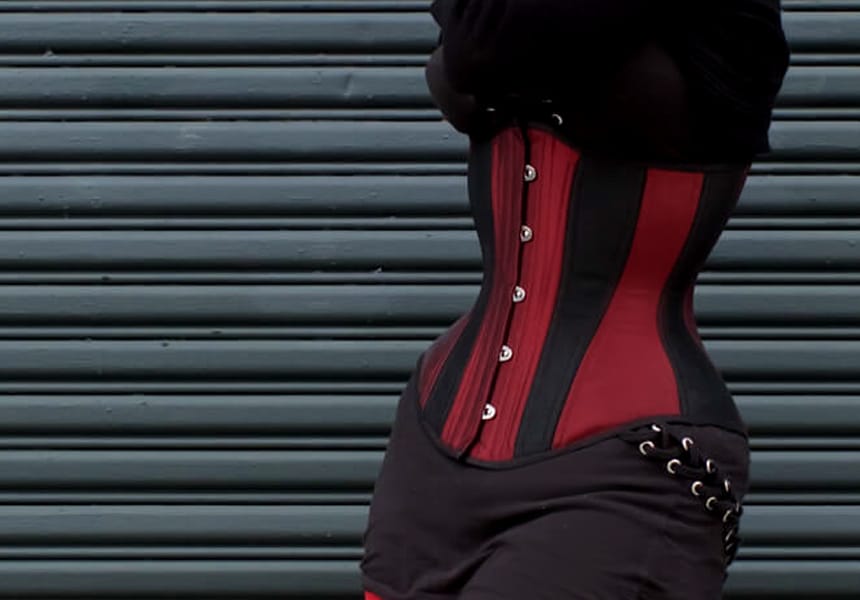
This is the classic Victorian corset. It is one of the most traditional designs of corsets. It is meant to give a perfect hourglass body shape with a very small waist. It cinches the waist without compressing the ribs.
The hourglass corset can be underbust, overbust or midbust and its neckline sweetheart-shaped or straight. When it comes to superior comfort, ease of wearing and optimal waist reduction, this corset is the best. However, according to corset standards, it doesn’t give the most flattering silhouette because the hips and the top part of the body are not compressed.
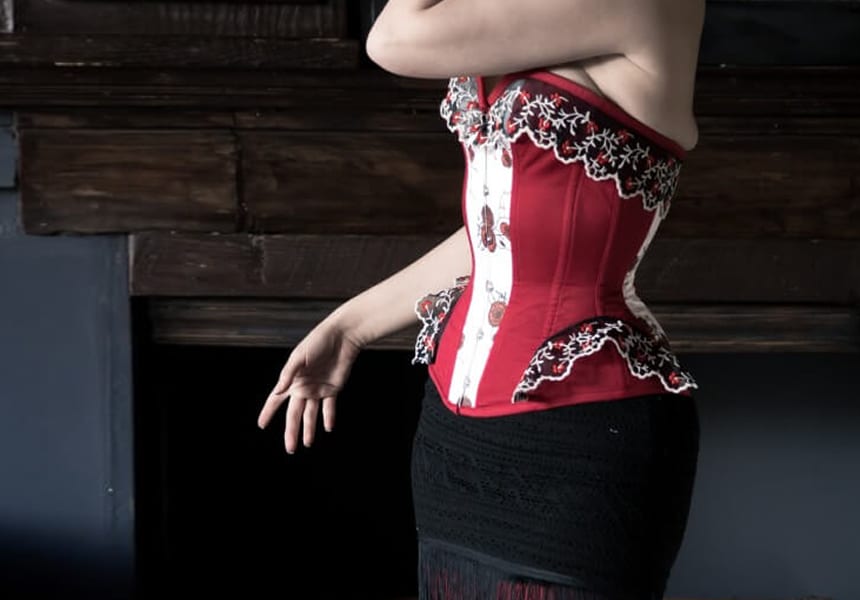
This corset is designed to create an illusion of length to the torso. It compresses the body throughout the torso. The only downside to the corset is that it severely strains the ribs.
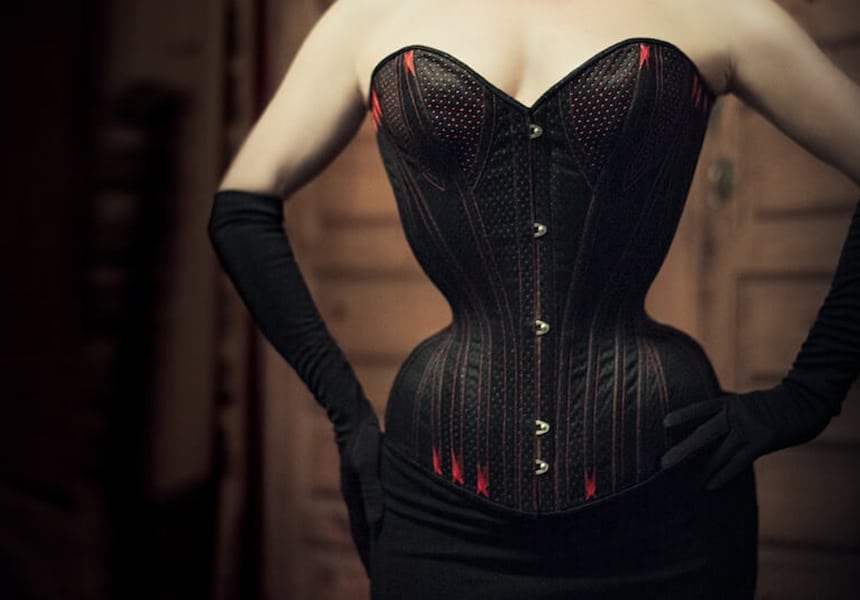
This corset is meant to create an impossibly tiny waist. It dramatically nips at the waist and cuts the body almost into half. It lives up to its name because the wearer ends up looking like a wasp with a segmented body.

Just like its name suggests, this corset style created an S-shape to the torso. It was one of the most comfortable corsets because it had supporting steels at the front and an inflexible busk.
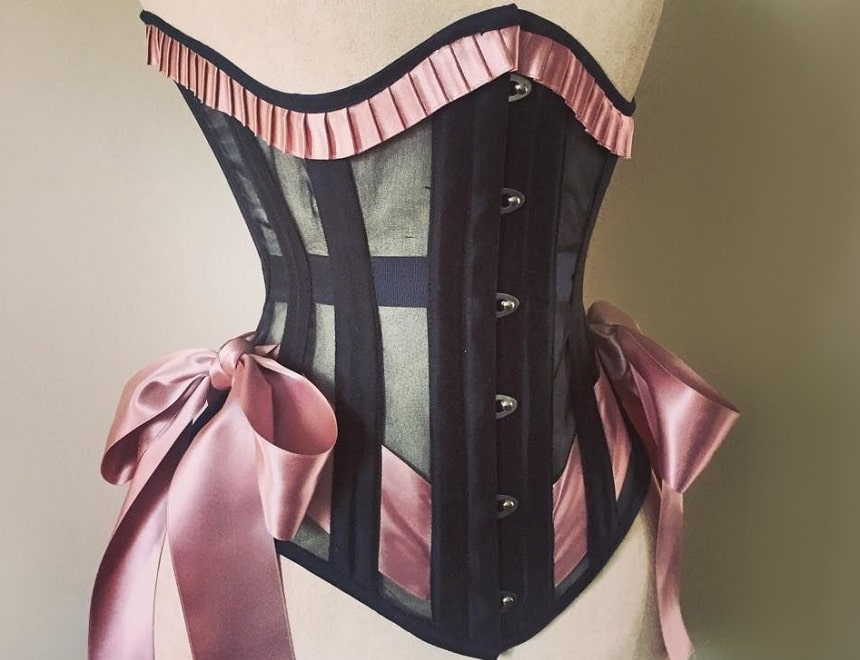
Also popularly known as the modern day corset, this style of corset is an everyday wear corset because it is made of lightweight material and it isn’t as tight fitting as other models.
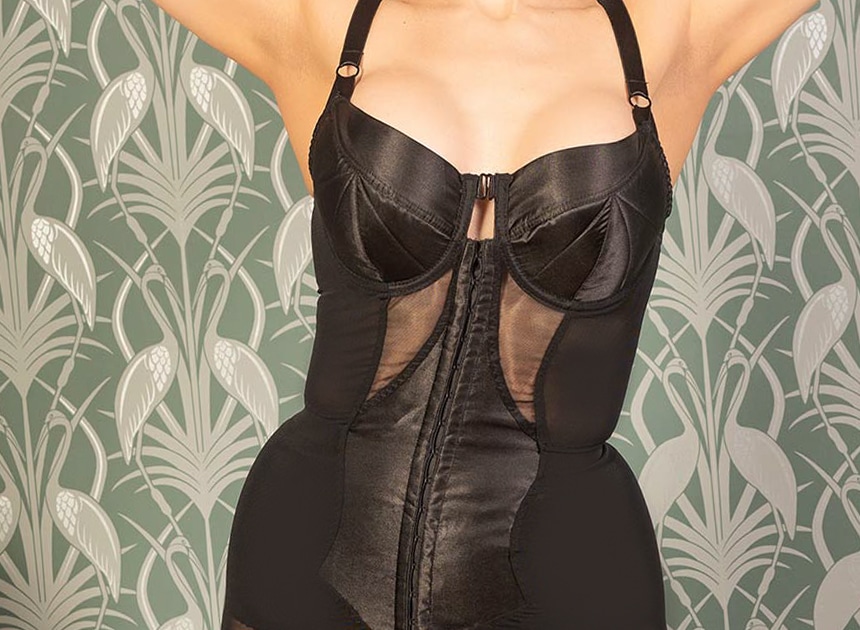
This is a corset that is long and goes down to the hip.
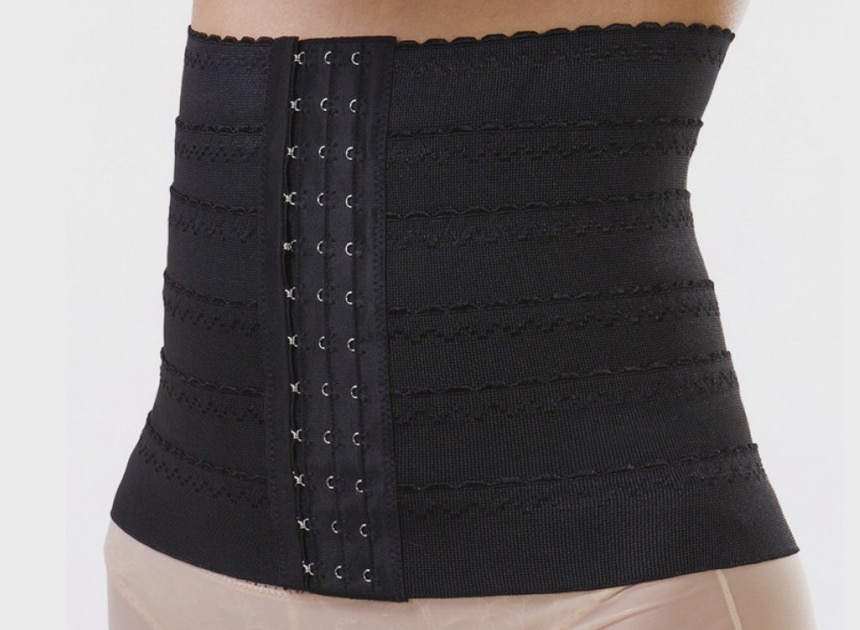
This only covers the waist area. It looks like a wide belt. It only gives a small waist compression compared to other corset styles.
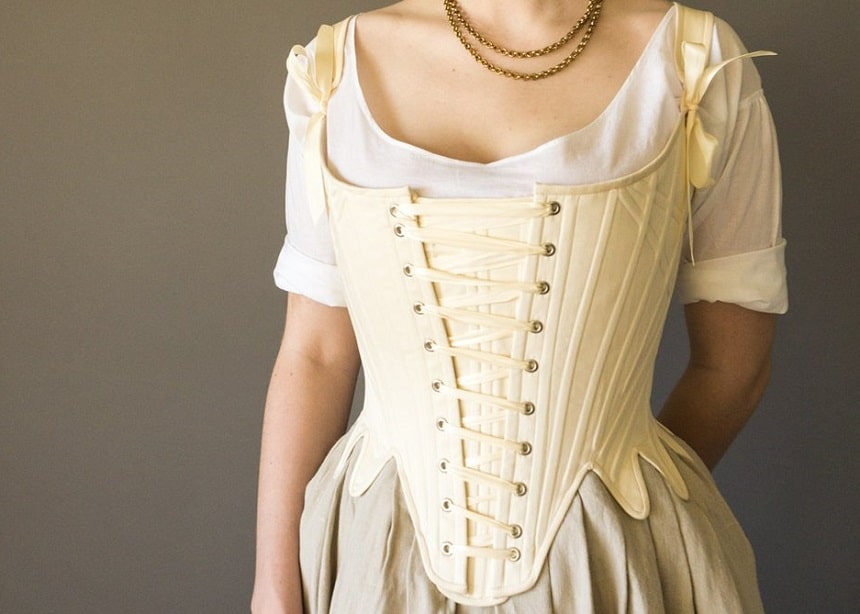
This corset gets its name from the appearance of lacing on its form. It can be laced on the front and back, on the front alone, or even have triple lacing.
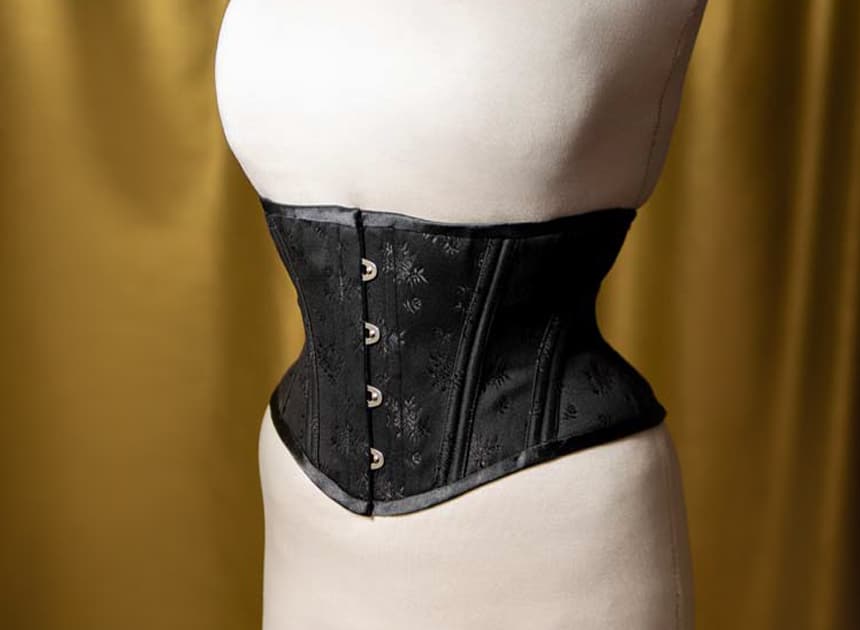
This is also a short corset created by Christian Dior. It starts from under the ribs and goes all the way to the top of the hips. It features elastic panels and lacing in the back to give it the stretch.
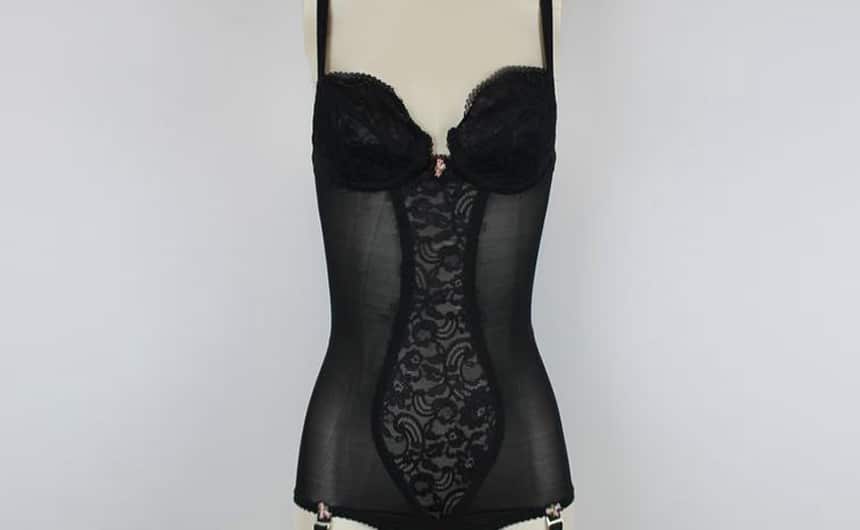
This is another one of Christian Dior’s signature corsets. It combines garter belt, waist clincher and bustier into a single garment. It is also popularly known as Basque.
You should use your natural waist to pick the right corset size for yourself. Your natural waist is where you bend from side to side. If it is less 38 inches, get a corset that is 4-7 inches smaller. If it is over 38 inches, get a corset that’s 7-10 inches smaller.
This is a way of sculpting the body with a steel-boned corset. The corset modifies the waist and creates a desired figure which is usually a trim waistline, a flat tummy or an accentuated hourglass.
Wearing a corset is safe if you use safe and sane corseting practices anytime you wear one. A corset should not be uncomfortable to give you that desired waistline in no time. If it’s causing you pain, loosen it or lose it.
Corseting has been a thing for centuries now, hence the multiple style variations available now. The different types of corsets are made with different types of cotton, silk and lace among other fabrics. Traditionally, corsets were an essential undergarment meant to cinch in the waist. In the resent day, it is worn for waist training and as a fashion accessory.
We have provided all the essential information you would need as a beginner whether you are looking to waist train or enjoy the outerwear corset trend. Many women have reservations about using a corset with claims that it is unsafe or it’s hard to find the right size and shape for their bodies. Believe it or not, there is a corset for every woman out there. All you need is enough knowledge.